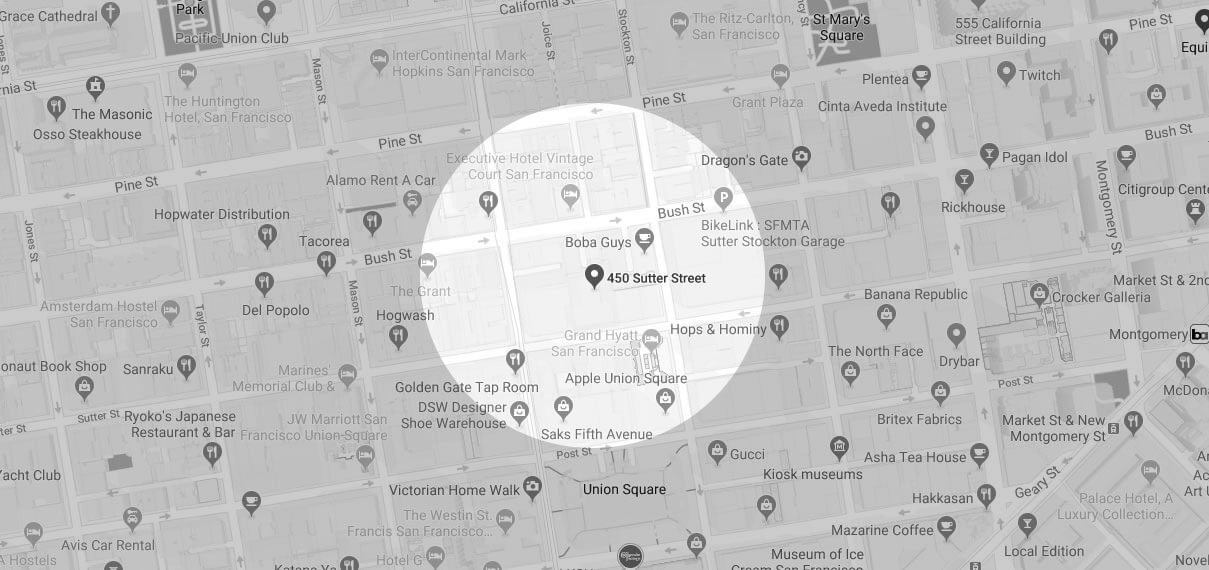By Dr. Leyli Shirvani, My Dentist San Francisco
Emergency dentistry is a critical and often undervalued part of dental care. It's about making quick and informed decisions to alleviate severe pain, treat infections, and handle dental trauma. As an experienced practitioner at My Dentist San Francisco, I've seen firsthand how prompt treatment can not only save teeth but also prevent long-term complications. In this guide, I'll walk you through the essentials of emergency dentistry, helping you understand when and how to seek immediate care.

In the realm of dental health, an emergency refers to any situation requiring immediate medical attention to alleviate severe pain, save a tooth, or stop ongoing tissue bleeding. From knocked-out teeth to severe infections, the spectrum of dental emergencies is wide and requires a diverse set of responses. As your dental healthcare provider, it's my duty to ensure you understand these situations and know how to react effectively.
Recognizing the signs of a dental emergency is the first step to getting the right help. Severe pain, bleeding, loose or knocked-out teeth, and swelling are all indicators that something is amiss. It's crucial to understand that while some dental issues can wait until your next appointment, emergencies cannot. They require immediate attention, sometimes even necessitating a visit to the emergency room.
Finally, preparation is key. In addition to knowing the signs of a dental emergency, having a plan in place can make a significant difference. This means having the contact information of your dental office readily available, understanding basic first aid for dental emergencies, and recognizing when to head straight to the emergency room. With the right knowledge and preparation, you can ensure the best possible outcome for your dental emergency.
Recognizing Dental Emergencies
Understanding what constitutes a dental emergency can often be the difference between saving and losing a tooth. Pain is often the most obvious indicator. If you're experiencing severe, persistent toothaches, it's a sign that something is wrong. However, not all emergencies are painful. For instance, you might not feel pain from a knocked-out tooth, but it's a situation that requires immediate attention.
Traumatic injuries to the teeth and mouth are among the most common dental emergencies. These can occur due to accidents, sports, or even biting down on something hard. Whether it's a broken, cracked, or knocked-out tooth, knowing how to handle these injuries can significantly affect the outcome. For example, if a tooth is knocked out, keeping it moist and getting to a dentist within 30 minutes can mean the difference between saving and losing the tooth.
Infections and abscesses are other common emergencies. These can present as severe pain, swelling, or a general feeling of illness. An abscess is a serious infection that can spread to other parts of the body if not treated promptly. If you notice a painful, pimple-like swelling in your mouth, it's crucial to seek immediate attention as it might indicate an abscess.
Lastly, uncontrolled bleeding post dental procedures or from an injury is a sign that something is wrong. While some bleeding is expected, especially after an extraction, persistent or heavy bleeding needs immediate attention. Knowing how to manage these situations, such as applying pressure to the bleeding area or using a cold compress, can help control the situation until you receive professional care.
Immediate Actions in Dental Emergencies
When a dental emergency occurs, knowing the immediate steps to take can significantly impact the outcome. For toothaches, clean the area around the sore tooth meticulously. Ensure that there's no food trapped between the teeth and rinse with warm salt water to disinfect the area. Over-the-counter pain relievers can alleviate pain, but they are not a solution; seeking dental care as soon as possible is crucial.
In the case of a knocked-out tooth, time is of the essence. Retrieve the tooth, holding it by the crown, and rinse off the root if it's dirty. Do not scrub it or remove any attached tissue fragments. If possible, try to reinsert it in the socket. If you can't reinsert it, keep it moist in milk, saline, or even saliva until you can get to a dentist. Saliva should be the best.
For broken or cracked teeth, rinse your mouth with warm water to clean the area. If the trauma has caused swelling, a cold compress on the outside cheek can help reduce it. Avoid taking painkillers that might thin the blood, as this can increase bleeding. And, as with any dental emergency, see a dentist as quickly as possible.
Lost fillings or crowns also need timely attention. If a crown falls off, save it and bring it to the dentist – it might be possible to reattach it. If you're experiencing pain, applying a little clove oil with a cotton swab on the tooth can help alleviate it. Again, these are temporary measures, and professional dental treatment is necessary.
Advanced Diagnostic and Treatment Options in Emergency Dentistry
In emergency dentistry, accurate diagnosis and effective treatment are vital. As a dental practitioner, I utilize a variety of diagnostic tools to understand the problem thoroughly. Radiographs or X-rays are invaluable in seeing below the surface, revealing the extent of any damage or infection. In certain situations, more advanced imaging such as CT scans may be necessary to fully understand the scope of the injury or disease.
Once a diagnosis is made, treatment must be swift and effective. For infections, antibiotics and drainage might be the initial step, followed by more definitive treatment such as root canal therapy or extraction. Structural issues like broken or lost teeth might require restoration with fillings, crowns, or even implants or bridges.
Pain management is a critical component of emergency dentistry. Options range from local anesthetics to prescription painkillers. The type and severity of the emergency will dictate the appropriate pain management strategy. It's also important to address the patient's anxiety, which is often high in emergency situations; a calm, professional demeanor and clear communication can be as important as any medication.
After an emergency procedure, follow-up care is crucial. This includes additional treatment to restore function and aesthetics, as well as preventive strategies to avoid future emergencies. Education on proper oral hygiene, dietary advice, and the importance of regular check-ups are part of comprehensive care.
The Role of Technology in Emergency Dentistry
Technology has revolutionized many aspects of dentistry, and emergency care is no exception. Advanced imaging techniques, like digital X-rays and CT scans, provide detailed views of the teeth and jaw, allowing for more accurate diagnoses and effective treatment plans. Intraoral cameras can give a closer look at the teeth and gums, helping both the dentist and patient understand the situation better.
Teledentistry is another area that's changing the landscape of emergency dental care. In situations where immediate in-person care isn't possible, teledentistry can provide the first line of advice and triage. Through video calls, patients can show their dental issues to a professional, receive preliminary advice, and understand their next steps.
The use of modern materials and techniques also improves the outcomes of emergency treatments. For example, biocompatible materials used in fillings and crowns can provide not only functional but also aesthetic repairs. The development of faster-setting compounds reduces treatment time, a crucial factor in emergency situations.
Finally, practice management software and electronic health records ensure that patient information is readily available, which is especially important in emergencies. Quick access to a patient's medical history, allergies, and past dental records can inform treatment decisions and avoid potential complications.
Preventive Measures to Avoid Dental Emergencies
While not all dental emergencies can be avoided, many can be prevented with prudent measures and regular care. One of the most effective ways is maintaining regular dental check-ups. These visits allow for the early detection and treatment of problems that could later become serious. They also provide an opportunity for the dentist to assess risks and educate patients on avoiding potential injuries.
Wearing proper protective gear during sports or other risky activities is essential. Custom-fitted mouthguards can protect against tooth fractures, avulsions, and jaw injuries. Avoiding hard foods, not using teeth as tools, and curbing bad oral habits can also significantly reduce the risk of emergencies.
Good oral hygiene is the cornerstone of dental health. Regular brushing and flossing, using fluoride toothpaste, and rinsing with an antibacterial mouthwash can prevent a multitude of dental problems. Additionally, being aware of the signs of dental issues, such as pain, sensitivity, or visual changes, and addressing them early can prevent the escalation into emergencies.
Educating patients on the importance of dental health, the risks of neglect, and the steps to take in an emergency is also a vital preventive strategy. Knowledge is power, and a well-informed patient is more likely to avoid emergencies and seek timely care when necessary.
Coping with the Aftermath of Dental Emergencies
After a dental emergency, it's not just about the immediate treatment; it's also about recovery and future prevention. Recovery might involve additional restorative procedures, pain management, and sometimes lifestyle adjustments. It's crucial to follow the dentist's instructions closely to ensure a smooth and effective healing process.
Understanding the impact of the emergency on your overall dental health is also important. In some cases, one emergency can lead to other issues or indicate underlying problems. A comprehensive dental examination after an emergency can assess the need for further treatment or preventive measures.
Future prevention plays a significant role in coping with the aftermath of dental emergencies in San Francisco. This might involve changing dietary habits, improving oral hygiene practices, or using protective devices during sports. Regular follow-ups with your dentist can help monitor your recovery and prevent future incidents.
Finally, dealing with the emotional and psychological aftermath is also important. Dental emergencies can be traumatic, and anxiety or fear of future problems can affect patients' wellbeing. Professional support, understanding, and reassurance from the dental team can help patients overcome these challenges and regain confidence in their dental health.
Last Words
As an experienced dental practitioner, I understand the urgency and discomfort associated with dental emergencies. Through this guide, I hope to have provided you with a thorough understanding of what constitutes a dental emergency, how to handle them, and most importantly, how to prevent them. Remember, the best approach to dental emergencies is a combination of knowledge, preparation, and prompt action.
Your oral health is an integral part of your overall well-being, and at My Dentist San Francisco, we're committed to providing you with the care and support you need, whether in an emergency or during routine care. Stay informed, be prepared, and never hesitate to reach out for help when you need it. Your smile is valuable, and we're here to ensure it stays bright and healthy for years to come.



